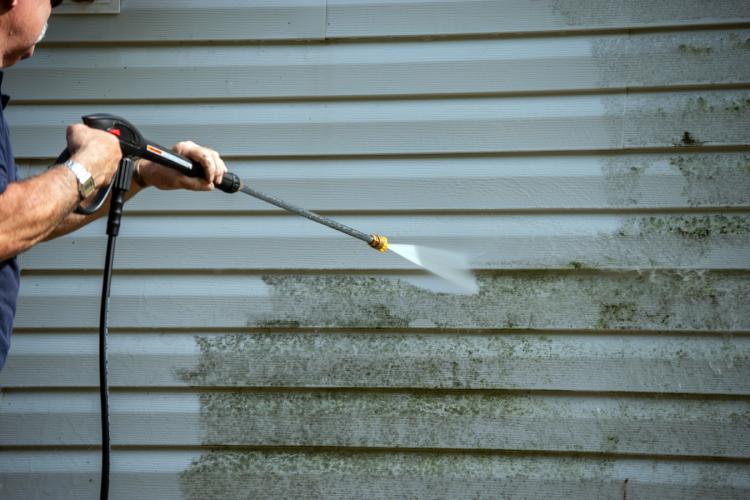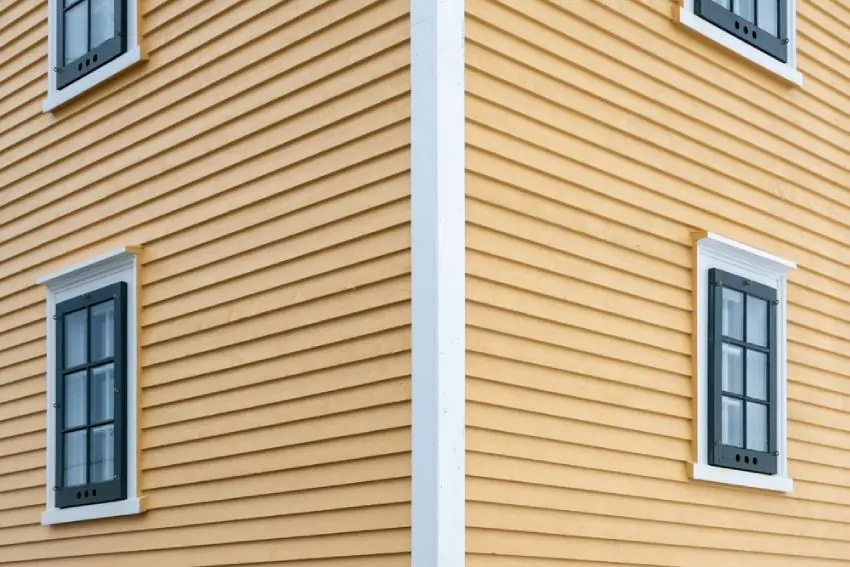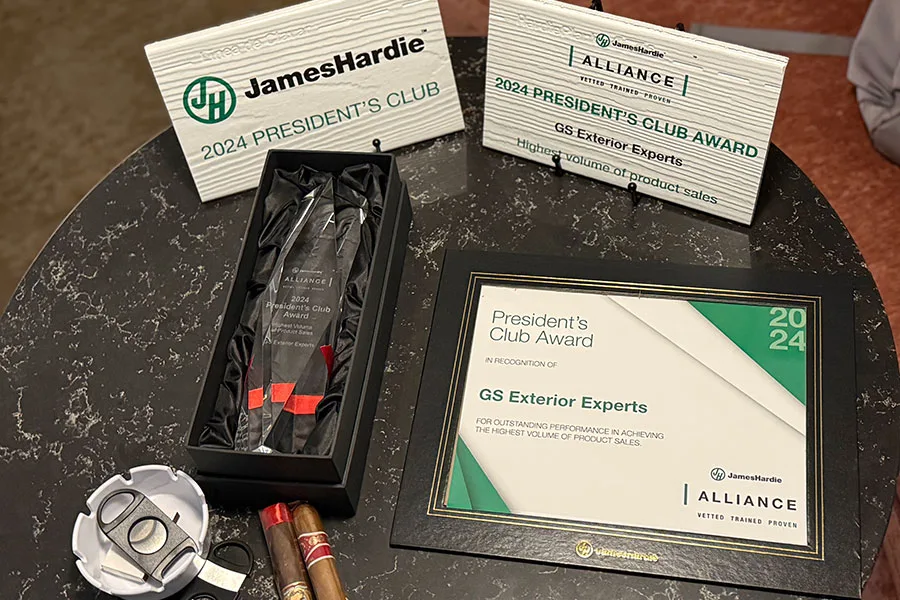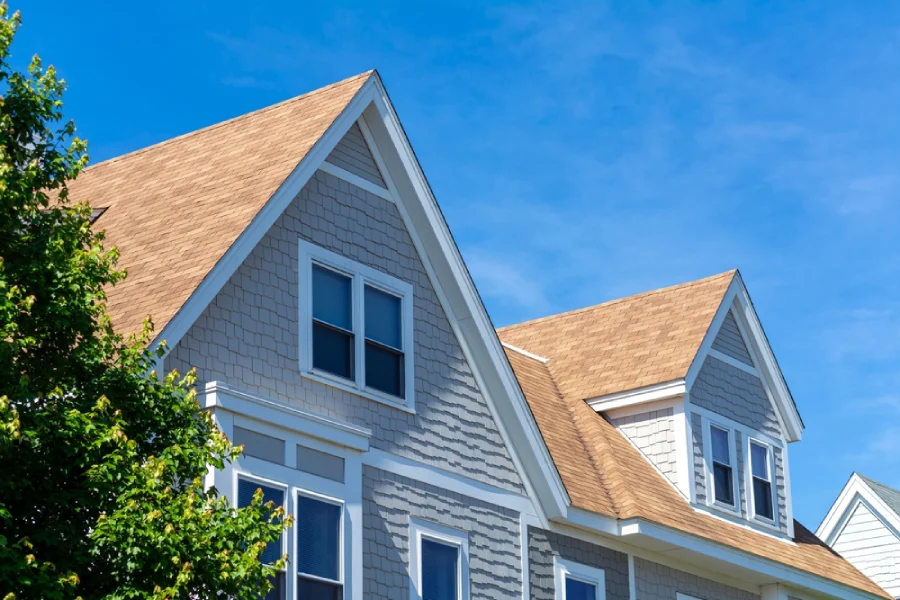Summary:
- Horizontal wood siding offers a classic, customizable look but requires regular upkeep.
- Horizontal vinyl siding is an affordable, low-maintenance option but lacks the authenticity of wood and has environmental drawbacks.
- Horizontal metal siding is durable, low-maintenance, and stylish but can be expensive and prone to dents.
- Choose the right horizontal siding based on your priorities for your home’s longevity, looks, and value.
Looking to give your home a fresh look and some extra protection? Horizontal siding might be just what you need. It’s a popular choice that adds a clean, versatile look to any house.
Horizontal siding, also called horizontal lap siding or cladding, uses long boards that run horizontally across the exterior walls. This simple design works with various architectural styles, from classic to contemporary.
In this guide, we’ll explore a few different types of horizontal siding materials, their benefits, and considerations to help you make an informed decision for your home improvement project.
Horizontal Wood Siding
Wood siding is a classic choice that instantly adds warmth and character to any home. It’s a favorite among homeowners who love that authentic, natural look.
A few wood species are commonly used for this type of siding, each with its unique characteristics:
- Cedar: This sturdy wood is naturally resistant to rot and pests, so it’s built to last. Plus, it ages beautifully into a silvery gray or can be stained or painted to keep its original color.
- Pine: A more affordable option, pine is a versatile softwood that can be painted or stained to match any color scheme. However, it requires more frequent maintenance.
- Redwood: Naturally resistant to decay and insects, this wood species is a long-lasting choice. Redwood is known for its rich color and beautiful grain patterns.
Pros of Horizontal Wood Siding
With unique grain patterns and textures, wood siding creates a look that can boost your curb appeal. It’s a classic look that never goes out of style.
Homeowners can also customize the look of wood siding with a wide range of colors and finishes. Whether you want a vibrant color or a natural finish, it can adapt to your style and the surrounding environment.
Things to Consider
Wood is susceptible to rot, insect infestation, and moisture damage, especially if not properly maintained. Expect to paint or stain it every few years to keep it looking its best and protected from the elements.
It’s also worth noting that wood siding can be more expensive than other options when choosing premium woods like redwood or cedar.
Horizontal Vinyl Siding
If low cost and low maintenance are top priorities, vinyl siding might be the perfect fit for your home.
Pros of Horizontal Vinyl Siding
- Affordability: Vinyl siding is typically the most affordable option compared to wood or metal. It’s a great way to give your home a fresh look without draining your savings account.
- Durability: Modern vinyl siding is engineered to withstand the elements, resisting fading, cracking, and warping. It’s a long-lasting choice that can hold up against rain, snow, and sun.
- Low Maintenance: Unlike wood siding, vinyl doesn’t require painting or staining. A quick rinse with a pressure washer is usually all it takes to keep it looking clean and vibrant.
What to Consider
- Environmental Impact: Vinyl isn’t the most eco-friendly option. It’s made from PVC, a type of plastic that isn’t biodegradable.
- Not the Real Deal: While vinyl can mimic the look of wood, it doesn’t have the same authentic feel or warmth.
Overall, horizontal vinyl siding is a practical and stylish choice that can give your home a fresh and updated look without the fuss of ongoing upkeep.

Horizontal Metal Siding
Metal siding is perfect for those who want a long-lasting, low-maintenance exterior with a contemporary aesthetic.
Here are a few varieties you can choose from:
- Steel: This type of metal siding is known for its strength and resilience. It’s also relatively affordable compared to other metals. However, it can be prone to rust if not properly coated.
- Aluminum: Lightweight and corrosion-resistant, aluminum is a great option for high-humidity areas.
- Copper: For a truly unique and eye-catching look, copper siding is a showstopper. It develops a beautiful patina over time, adding character to your home’s exterior.
Pros of Horizontal Metal Siding
Metal siding is built to last. It’s resistant to fire, pests, rot, and extreme weather conditions, making it a long-term investment for your home.
Unlike wood, metal siding doesn’t need to be painted or stained regularly. It’s also resistant to mold and mildew, so you won’t have to worry about those pesky cleaning chores.
And let’s not forget the aesthetic appeal. Metal siding gives your home a sleek, modern look that’s sure to make a statement.
Things to Keep in Mind
Metal siding is generally more expensive than vinyl or wood, but it’s a long-term investment that can pay off in the long run.
Also, while metal siding is generally quite durable, it can be prone to dents, especially when the Colorado hail hits.
Your Dream Home Exterior Awaits
Choosing the right horizontal siding type is an investment in your home’s longevity, aesthetics, and value. Take your time, research thoroughly, and consult with professionals if needed to ensure you make an informed decision that you’ll be happy with for years to come.
Ready to get started?
Explore all of our siding product options at GS Exterior Experts.




